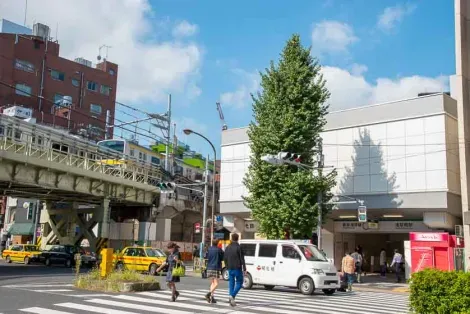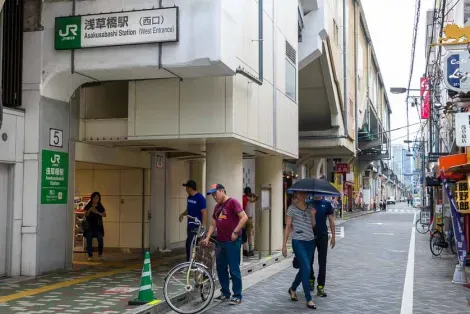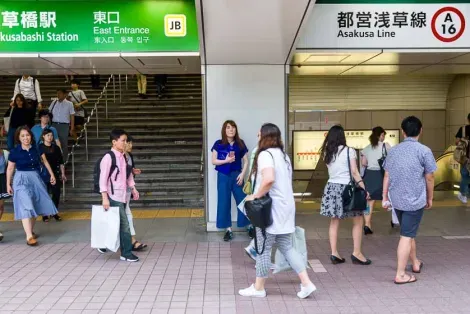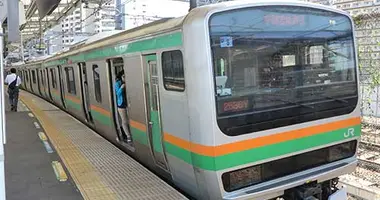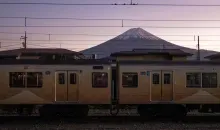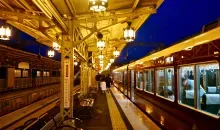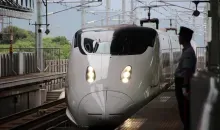Asakusabashi Station 浅草橋駅

Sobu Line East Exit (left) & Asakusa Subway Line Exit 3 (right) of Asakusabashi Station across Edo-dori Avenue, Asakusabashi, Tokyo
@Japan Visitor
Asakusabashi Station: read a guide to Asakusabashi Station on the Toei Asakusa Subway Line and the JR Chuo-Sobu Line.
Asakusabashi Station in the Asakusabashi district of Taito ward, eastern Tokyo, serves the above-ground east-west running JR Sobu Line (station code: JB-20), and the underground north-south running Toei Asakusa subway line (station code: A-16). Both lines intersect at Asakusabashi and share a station.
The stations next on the Sobu Line are Ryogoku to the east (just across the Sumida River) and Akihabara to the west. The stations next on the Asakusa Subway Line are Higashi-nihombashi to the south and Kuramae to the north. The next stop north after Kuramae is Asakusa - not to be confused with Asakusabashi.
The Toei Asakusa Subway Line provides direct access to both Haneda Airport and Narita Airport. This convenience, together with the reasonably priced accommodation here, makes Asakusabashi a popular place to stay.
The surrounding Asakusbashi district is best known for its traditional doll stores and clothing/decorative accessory stores (beads, buckles, ribbons, leathergoods, etc.) and, more recently, for budget hotels.
History
Asakusabashi Station on the JR Sobu Line dates from 1932, and on the Toei Asakusa Subway Line, from 1960. The JR Sobu Line station was refurbished in 2017, which included the installation of elevators at the West Exit.
Asakusabashi Station on the JR Sobu Line
Train services start at about 5am going west, about 4:30 am going east, and end about half past midnight going west, about quarter to 1am going east. This is a JR-operated line, so you can use your Japan Rail Pass here. Otherwise, the most convenient way to ride the train is to use a prepaid card.
The above-ground Asakusabashi Station on the JR Sobu Line has two exits.
The East Exit is the main exit, opening out onto the main north-south Edo-dori Avenue, which is lined with stores, restaurants and hotels. This exit also gives you immediate access to the Asakusa Subway line if you are changing lines. The East Exit is accessible from the very front of the train if you are coming from the west (Mitaka/Shinjuku/Akihabara), and from the very back of the train if you are coming from the east (Chiba/Kinshicho/Ryogoku).
The West Exit provides access to the backstreets of western Asakusabashi, full of tiny accessory stores and eateries. To use the West Exit, get on close to the back of the train if you are coming from the west (Mitaka/Shinjuku/Akihabara) and close to the front of the train if you are coming from the east (Chiba/Kinshicho/Ryogoku).
Barrier Free
The only elevator at Asakusabashi Station is at the West Exit. So, if you have extra-heavy bags or are physically challenged, you should use the West Exit. Note that the elevator on each platform goes only halfway down. You then have to get out and take the other, central, elevator to get down to the ground floor. There are no escalators at Asakusabashi Station on the JR Sobu Line, only stairs.
From the West Exit to the main East Exit on Edo-dori Avenue is about a two minute walk along the length of station.
Asakusabashi Station on the Toei Asakusa Subway Line
Train services start at about 5am and end just after midnight. Read more about Tokyo subway tickets.
Asakusabashi Station on the Asakusa Subway Line has six exits. The main exit is Exit A3, which is part of the Asakusabashi Station building for the JR Sobu Line. This is the exit to take if you are changing to or from the Sobu Line. Exit A3 has escalator access to street level. Exit A1 has an elevator.
Access to Hotels from Asakusabashi Station
Sobu Line Station Hotel Access
If you can manage the stairs, use the East Exit if you are staying at the following hotels: Belmont Hotel, Hotel Yanagibashi, Web Hotel Tokyo Asakusabashi, Tsubame's Guesthouse, Anne Hostel Asakusabashi, Toyoko Inn Akiba Asakusabashi Station East Exit, Guest House Kan, Hotel Route Inn East Grand Asakusabashi.
Nearby Attractions
The Asakusabashi area around the station is full of cheap eats and drinks, Japanese and other Asian, including fast food, as well as some more elegant dining. These cater to both locals and to tourists staying at the area's several budget hotels and hostels.
Kuramae, just five minutes' walk north of the station, features numerous small, trendy cafes and handicraft studios. Bakurocho, just south of the station, across the main east-west thoroughfare of Yasukuni-dori Avenue, is full of cheap clothing stores and clothing wholesalers. Yanagibashi, across the north-south running Edo-dori Avenue, is a former geisha entertainment area that has a few small hostels and hotels, and a picturesque iron bridge across the Kanda River, dating from 1929.



